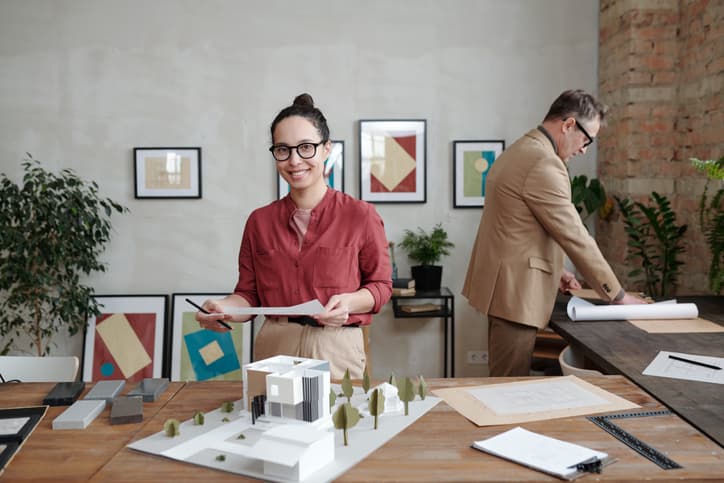
By Lesley Gulliver, Managing Director, The Engine Room

Lesley Gulliver, Managing Director, The Engine Room
It is perhaps unsurprising that the Collins Dictionary word of the year for 2020 was lockdown, with Coronavirus, furlough and self-isolate also reaching the shortlist. These pandemic-related terms dominated our lives, so much so that we grew to feel as though they’d always been part of our vocabulary.
Thinking about the world of employment specifically, there can be no disputing that phraseology such as working from home, remote working and hybrid working, was equally as commonplace. And much like the words mentioned above, these too were alien for many of us before the virus outbreak.
Of course, flexibility has been core to the operating models of some organisations for years. But these businesses were undoubtedly few and far between. More typical, perhaps, were the companies who knew colleagues would appreciate the WFH option, but they simply couldn’t trust it to be effective – fearful of the potential impact on productivity or the degree of change required to make the movement a success.
But don’t these fears say more about the company, its leadership, or its culture, than they do the working from home practice itself? Perhaps they even demonstrate how we, as individuals, also felt averse to breaking from the norm.
Because when Covid-19 hit, everyone came to realise they needn’t have worried. If brands had innovation running through their DNA, they continued to find ways to be innovative. If they had cultures rich with authentic camaraderie, colleagues dug deep to support each other, whether they were in the same building or not. And autonomous, conscientious individuals still found ways to remain productive because they cared greatly about the contribution they made to their organisations.
However, these statements are generalisations – they didn’t apply to all. They also perhaps don’t emphasise just how difficult this all was at times, and how much transformational change some teams had to go through, to adapt and survive.
Remember we’re all individuals
Months ago, research from the Institute of Directors suggested that 74% of businesses intend to maintain permanent home working policies moving forward. However, the IoD’s director of policy Roger Barker also reportedly stressed at the time that: “Working from home doesn’t work for everyone, and directors must be alive to the downsides.”
And this is the crucial point, because we’re all individuals.
Yes, UK lockdowns proved that businesses don’t grind to a halt without a physical bricks and mortar presence. Productivity doesn’t fall off a cliff. Employees don’t suddenly go rogue. But it has been challenging, even for tight-knit, forward-thinking and trusting brands. Some teams feel more united than ever, while others are working like islands.
This varied – and seemingly interchanging – landscape, is perhaps now an employer’s biggest test. Because with the ‘stay at home’ message gone, close contact rules easing, and many people moving back into the workplace, all eyes are on leaders to set the tone surrounding what happens to the workforce dynamic next.
What have we missed?
To make informed decisions about where we go from here, it is also important to reflect on where we find ourselves now. We’ve enjoyed reduced commutes, greater work-life balance, and the freedom to break from the ‘shackles’ of a 9-5, for instance. But what have we missed?
In the earlier years of our careers particularly, we learn not just from education and formal training, but observation too. We listen in on conversations, soak up the behaviour of others, witness responses, benefit from context, and make mistakes. It’s all part of finding our feet.
So, while we can take steps to encourage this same dialogue when working disparately, not only does it feel a little forced, but experiential learning is undoubtedly jeopardised. The times when we’d typically pick the brains of a colleague, allay fears, share an idea, or even overcome a feeling of embarrassment, don’t really exist anymore – not as naturally, anyway.
This lost dynamic would be a real shame, not to mention a worry. It could really impact the fulfilment and progression of colleagues, particularly those in the inaugural chapters of their careers. We only have to look at research conducted by Engine Insight, who discovered that Gen Z and millennial workers have suffered the most from this new world of work, to see that it’s already happening.
This isn’t just an experience or seniority debate though. Some of it is simply about what drives us in the world of work. What we relate to. What makes us feel safe, content and stimulated.
And so many of these needs are satisfied by an organisation’s culture.
Is culture at risk?
This isn’t to say that remote working has completely eroded culture – on the contrary, we’ve seen some fantastic examples of brands digging deep and demonstrating real authenticity when it comes to their sense of purpose, principles and personality. And these three Ps are often what attract people to want to work for a business in the first place.
But the three Ps are usually reinforced in so many ways, from the social interactions we have, to the way we make decisions and even the surroundings we enjoy in the workplace. So, in the absence of these elements – which ordinarily move us all forward in a cohesive direction – it’s naturally harder for individuals to keep a collective culture front of mind and alive.
This doesn’t make it impossible, providing leaders are alert and continue to exert more effort than ever, to maintain their cultural integrity.
Changing demands
The longer people work from home permanently, the more they’re likely to seek different things from their employers. Attentiveness to these changing needs – and the ability and agility to adapt accordingly – could prove the difference between safeguarding employees’ engagement and loyalty, or not.
This goes some way to explaining why hybrid working seemingly holds the answer for many organisations. Perhaps it’s also a ‘middle ground’ that keeps everyone happy, to some extent. Those who enjoy being at home still can be, some of the time. Those who miss the workplace don’t have to, anymore. Those who fear any long-term impact on team togetherness – or even productivity if that’s still a worry – can have their concerns alleviated, at least a little.
But even hybrid working requires careful thought and strong leadership – perhaps even more than a permanent return to the office or a 100% WFH routine. Safety, communication, the office layout, socialising, planning, technology – the list of what makes an effective hybrid strategy goes on. Some structure within this flexible environment is also arguably required – if this doesn’t sound like too much of a contradiction in terms – because otherwise behaviour, standards and commitments to one another, could become subjective.
The three Ps will really come into play here, once again, because brands that understand the role of a shared sense of purpose, and a collective, authentic push towards it, should weather the next stage of this storm well.
And herein lies the role that culture could play in the long-term prognosis for organisations in the post-pandemic world. It can and should remain the fair and respected barometer for decision making, especially when people’s viewpoints differ. Sadly, it may still be some time before Covid-19 is nothing but a distant memory, especially with new strains causing ongoing concerns and the length of vaccination protection still being unknown. But it is in this sea of continued change that organisational culture can be an anchor.


